- About Us
- Advertise
- Editorial
- Contact Us
- Terms and Conditions
- Privacy Policy
- Do Not Sell My Personal Information
© 2025 MJH Life Sciences™ and Dental Products Report. All rights reserved.
Dental Lab Products 2022 Innovation Guide
Dental lab professionals share a look back at the past year and look ahead to what’s in store for the dental lab industry in 2022.

As the calendar gets ready to turn from 2021 to 2022, Dental Lab Products® and experts from around the industry are here to take stock of all that happened during the past 12 months and what they expect to happen throughout the upcoming year. Although the word unprecedented was thrown around quite a bit during the ongoing COVID-19 pandemic, 2021 wasn’t solely focused on lockdowns and safety precautions. Numerous new technologies and materials debuted and opened new opportunities for labs across the industry. Even more innovations are on tap for 2022, so here are the thoughts and experiences from experts throughout the dental lab industry.
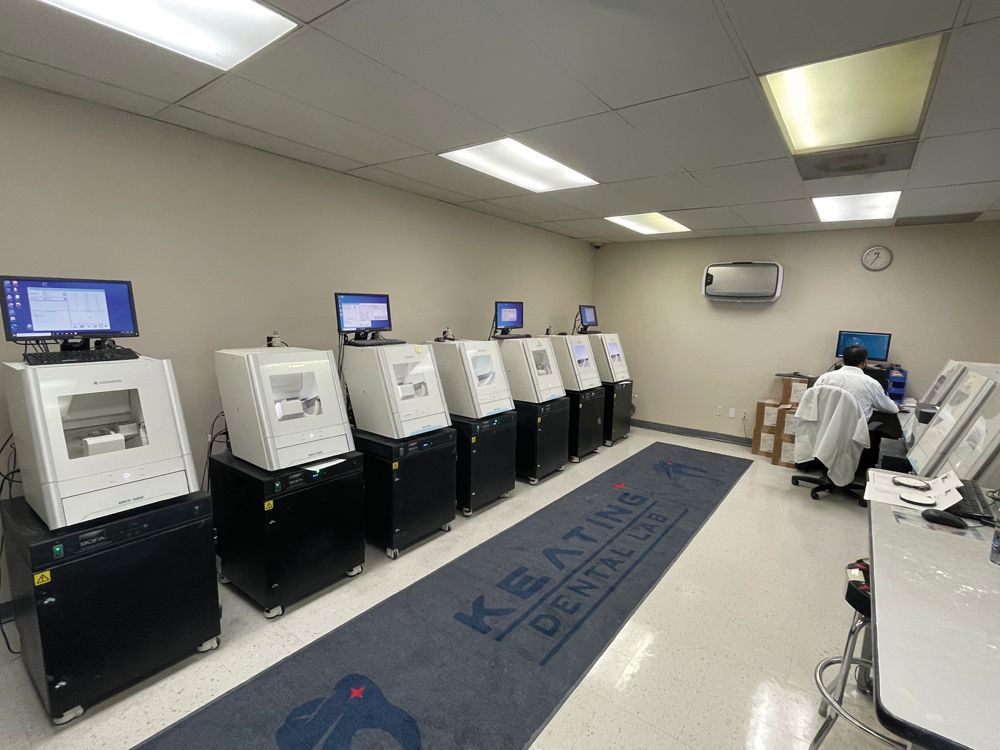
A lab technician at work among the DGSHAPE DWX mills at Keating Dental Lab.
Versatile Mills Keep Busy Labs Humming
Shaun Keating, CDT, owner of Keating Dental Lab
Looking back over the year, Roland DGA’s DGSHAPE milling solutions have had a very positive impact on our overall production and efficiency here at Keating Dental Lab. Having multiple machines—more than 11 units in our current fleet and expanding regularly—has also been key to maintaining an efficient workflow while maximizing return on investment. DGSHAPE’s DWX devices offer versatility and an open architecture that make it possible to use a multitude of design applications while allowing us the advantage of producing a wide variety of dental restorations.
DGSHAPE devices’ ease of use has also reduced our training time and minimized operator errors to the point where they are almost nonexistent. Combining these 2 great benefits means we can onboard a new technician in a short few weeks vs a month, thereby giving us the ability to start producing and generating income almost immediately. Our DWX mills also minimize errors because of their efficiency and reliability. They allow us to maximize the use of our milling blocks and tools to 95% usage, which enables us to produce more product and sell at a lower, more competitive overall cost.
When we first started using DGSHAPE DWX mills, we were only milling basic zirconia restorations. Over the years, the technology has continued to evolve both in terms of its capabilities and in terms of the comfort level dentists have with utilizing new materials. As a result, we are now milling PMMA, hybrid-type restorations, all-on-4s, zirconia abutments, and diagnostic wax-ups on our DWX dry mills. In addition, Keating Dental Lab is now also milling custom titanium abutments and glass ceramics using the DGSHAPE DWX-42W wet mill.
The dental industry, both from a laboratory and clinical perspective, is trending very rapidly toward a completely digital workflow. I see milling continuing to be a viable solution for predictable, quality, and cost-effective production of dental restorations and prosthetics in 2022 and for years to come. However, we are also seeing 3D digital printing advance and increase in market share to the point that printing zirconia might become more commercialized in the larger dental laboratories in the near future. How these printed materials will perform in comparison with milled monolithic materials is not yet known.
Keating Dental Lab is at the forefront of digital dental technology. In 2022, we will continue to invest the time and resources to validate new and upcoming technologies that can be used to produce restorations and appliances using a variety of raw materials. We have been using Roland DGA’s DGSHAPE devices since the release of their first dental mill in 2010, and they have been and continue to be second to none in service, quality, and reliability. Keating Dental Lab has also been blessed with a great team of dental technicians. The team we have here at Keating Dental Lab along with our partnership with Roland DGA make us hard to beat.
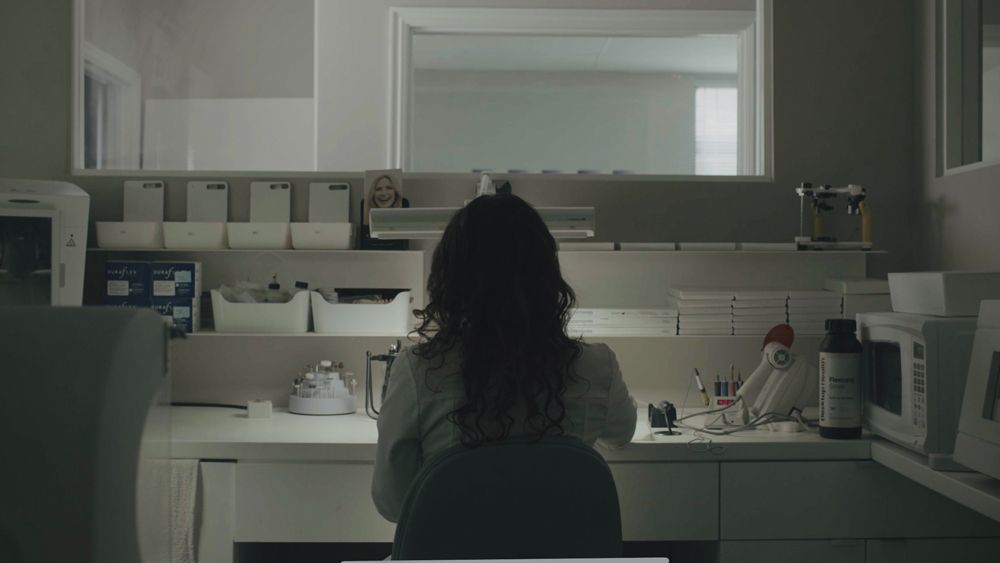
Jessica Birrell at work in her lab, where Flexcera resins have made digital dentures better than ever.
Materials Make Better Digital Dentures
Jessica Birrell, MOM, CDT, MUA, owner of Capture Dental Arts
Emerging from the year 2020, with delays on product releases, postponed conferences, and plans placed on hold, 2021 allowed opportunities for growth and innovation. Our previous methods have been altered, and many of us—either by choice or circumstances—see new perspectives, speeding up the evolution our industry. Leading the way stands a company that’s passion and innovation has brought an incredible product to the market: Flexcera by Desktop Health. Printed dentures, temporaries, partials, and flippers have all greatly advanced, thus simplifying the process and enhancing the quality. The innovative team behind Flexcera has gone above and beyond with this futuristic material, and they are just getting started!
A special thanks to all those who dared to shine in 2021, allowing these obstacles to advance dentistry faster than ever before!
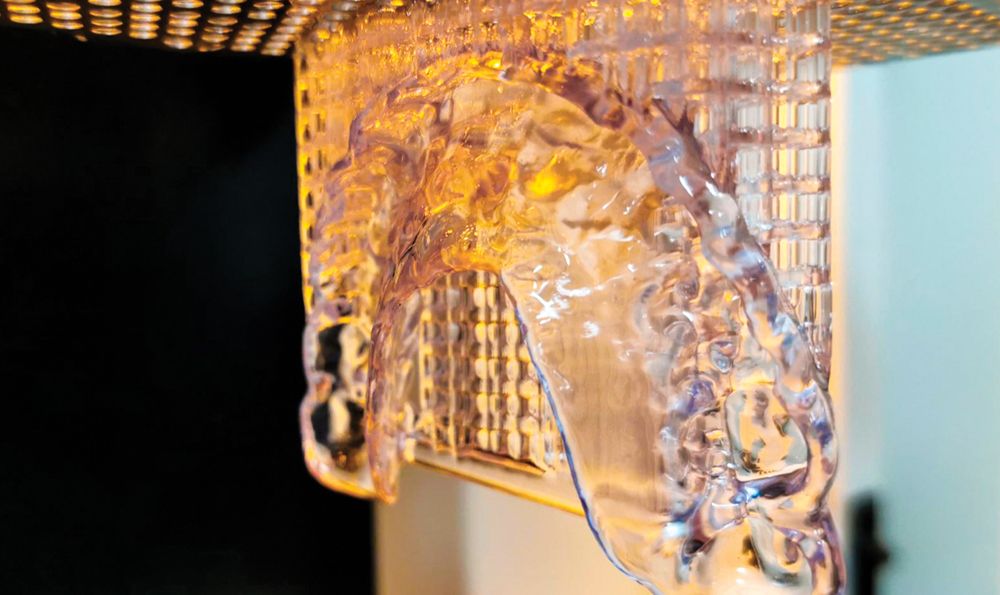
Appliances printed with NextDent Ortho Flex material.
3D Printing Expansion Shows Need for More Technician Training
Stijn Hanssen, sales, marketing, and applications manager for 3D Systems
In the past year, we have seen the drive toward digital dentistry accelerate. Simultaneously, there is currently a worldwide shortage of dental technicians. To help address the move to digital dentistry, 3D Systems launched its new NextDent Ortho Flex material. This clear material is the perfect solution for in-house production of dental splints and retainers.
2022 promises to be an exciting year for digital dentistry and 3D printing in general. With a focus on new applications driven by material development, more chairside devices are expected to come to the market. In addition to more in-person events becoming possible again, training and education on digital workflows will be key.

Digitally produced dentures printed on a Carbon 3D printer.
Pandemic Makes Demand for Lab Technicians More Acute
Jamie Stover, CDT, senior manager of dental laboratory applications at Carbon
A trend we continued to see in 2021 was the adoption of 3D printing to produce night guards, bite splints, and dentures. We also saw that the lingering impact of the COVID-19 pandemic, which continued to make chair time in the dentist’s office more valuable than ever. That continued to drive the adoption of digital everything—workflows, intraoral scanner utilization, and digitally produced appliances whenever possible.
The 2 biggest trends to watch in 2022 are interrelated: The industry may continue to see a staffing shortage in the dental labs, even as a crushing amount of work is coming their way thanks to the growing demand for digitally produced removable appliances.
Experienced removable lab technicians who use traditional analog methods are aging out of the workforce. One survey showed that over 60% of technicians are age 55 or older. The industry should recruit and train a new generation of technicians, utilizing the knowledge of the experienced technicians, who can operate the digital tools of 3D printing. Some dental labs already have good recruitment and training programs underway, but more labs need to join that trend.
On the upside, as new and better materials continue to be developed for 3D printing—and take their place alongside ever-improving software and hardware—we hope to see continued progress in the creation of flexible partials and 3D printed workflows for implant overdentures replacing analog fabrication methods.
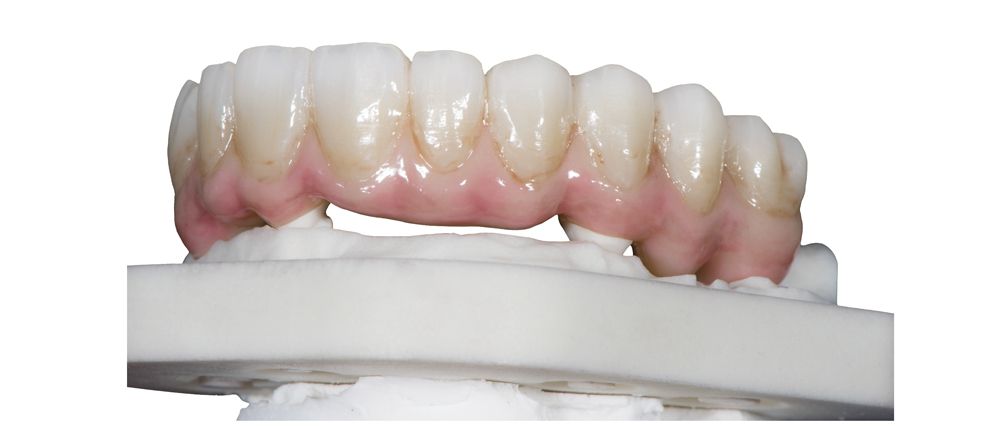
Aidite’s Biomic Stain/Glaze system creates lifelike restoration details.
New Materials Help Labs Succeed
Daniel M. Swamy, CDT, director of technology at Aidite USA
As we progress into the digital age of dentistry, the processes seem to head into faster production modes. Technicians and dentists alike are concerned about cost of restorations and how this will affect insurance for services and fabricated appliances. It is an exciting time to be in this industry and to watch the fascinating and innovative materials and processes being redefined.
This trend is due in part to the lack of qualified dental technicians and their availability. Furthermore, with very few schools available, most labs must structure training into their production. This becomes a tedious process as production slows and employee turnover to other types of businesses affects the entire industry.
Fortunately, materials are getting more advanced, with innovative zirconia, PMMA, and hybrid polyamides being at the forefront. Multigradient zirconia, as opposed to multilayered zirconia, offers better and much-needed color schemes that accurately match shade guides. New manufacturing processes allow for no demarcations, and each colored portion supports the strength of another. Optical properties and structural integrity are more enhanced to eliminate the need for time-consuming porcelain buildup, as monolithic restorations start to resemble layered ceramics.
Monolithic restorations can now be fabricated in dramatically reduced time as well. High-quality spindles and multiple disc changer milling machines offer fewer issues with breakdowns and around-the-clock milling efficiency.
Print technology is getting more advanced with high efficiency units and better inert polyvinyl. The designs and technology of milled dentures and partials are headed for greater improvements, all with efficiency in mind.
Choices of hybrid dentures and materials are undergoing many improvements as dentists and laboratory personnel explore advanced techniques. On the horizon is printable zirconia, which may reduce the manufacturing and milling cost, eliminating milling machines and tools. Although this research and development by zirconia manufacturers started a few years ago, I believe it will become a reality soon. The elimination of tedious milling and processing is a practical possibility.
One main new product introduced to dentistry is zirconia for veneers. In the past, glass ceramics was the material of choice, but better techniques of bonding zirconia lend a novel approach to esthetics and reduced cost. In this innovative workflow, a lithium disilicate spray is sintered to the intaglio surface and etched for bonding.
This will revolutionize the concepts of veneering with multiple shade and value options, a strength of 600 MPa, and 60% translucency. Multiple single veneer units can be nested within the zirconia disc for a reduced cost.
Another innovation of significant importance is the introduction of flowable ceramic coloration systems. This will enable ceramists to create a microlayer of fine-grained feldspathic porcelain on the restorations. Viscosity control enables the user to add proximal contacts and minor additions without the need to perform additional bakes. Stain and glaze with metal oxides that block light are now being replaced with flowable ceramics with rare earth color grains and added fluorescence to easily replicate natural bioesthetics with natural effects.
Universally used for feldspathic, lithium disilicates, and zirconia, these new materials provide an immediate vitality in optical properties with fluorescence and 3D effects. Esthetic colors and pink hues are now available to easily color crown and tissue portions of restorations.
More dentists are utilizing intraoral scanners. As these become popular, the prices for such equipment will become more affordable with open architecture, as closed systems do not offer many options. Accuracy and efficiency are greatly enhanced with minimum patient discomfort. Data transmission is done instantaneously, and production of appliances is started without delay.
Forward-thinking companies with a vision for the future are always progressive with innovative products and techniques. Companies that offer comprehensive support and education will thrive, as this has become of prime importance. New software developments and materials are driving this industry, and the need for prompt support is critical for success. Without this valuable resource, clinicians and labs may encounter difficulties and inconsistencies with fabricated appliances.
The future looks interesting as we move further with newer developments and wait with anticipation for the newest trends in dentistry.
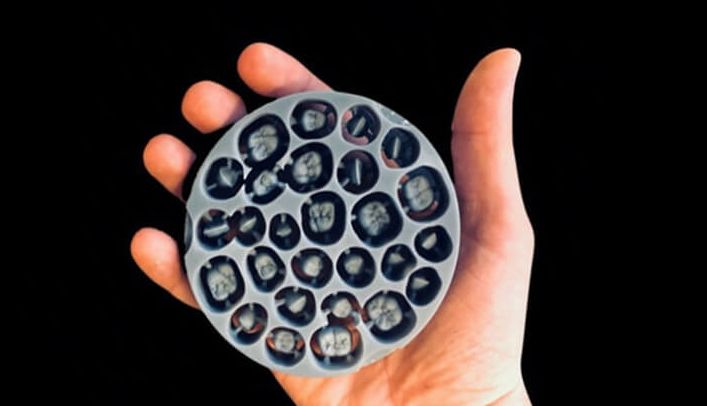
Adversity Brings Out the Best of Dental Labs
Marybeth Starr, head of brand promise at Harvest Dental Products
Hindsight 2021…the biggest impact on our community has been the resiliency I’ve seen in our industry. Working through a pandemic and coming out on the right side has been a struggle, but it has shown the strength of our dental family. We have learned to adapt to supply chain issues, changing purchasing patterns to compensate for potential product outages, all while working together to help each other figure it out. We’ve had to be patient for products and new innovations, but the visionaries have kept visioneering and evolving. New groups and forums have emerged with the goal of lifting each other up. I don’t know if we realize how uncommon that is in the business world.
In 2022, we will still feel the weight of the supply chain issues, and it will hinder the ability of manufacturers to innovate with speed, and that will change as well. Innovation will involve seeking ways around the obstacles in our path. I think we will see continued growth and modernization in the way of new products and services as well as in the way we communicate and cultivate our community.
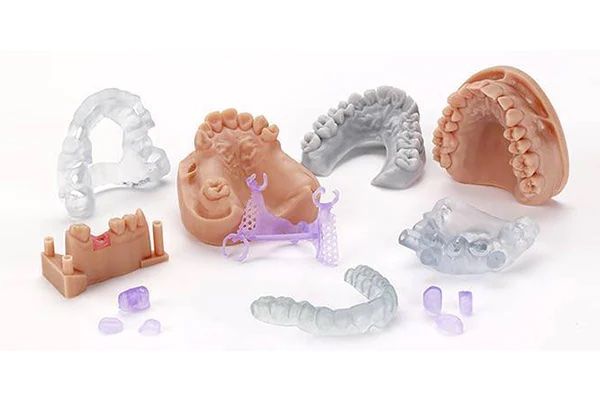
Innovations Push Transition to Digital Workflows
Andrew Kissin, director of marketing at Zahn Dental
When I look back on 2021, I can’t help but notice all the advancements in 3D printing and where our industry is going. 3D printer technology is continuing to evolve, and the materials are starting to catch up in terms of innovation. I think 2022 will bring new material indications to our industry, and dental labs will have more choices for printing in-house, specifically premium digital dentures, and continue to transition analog workflows to digital.
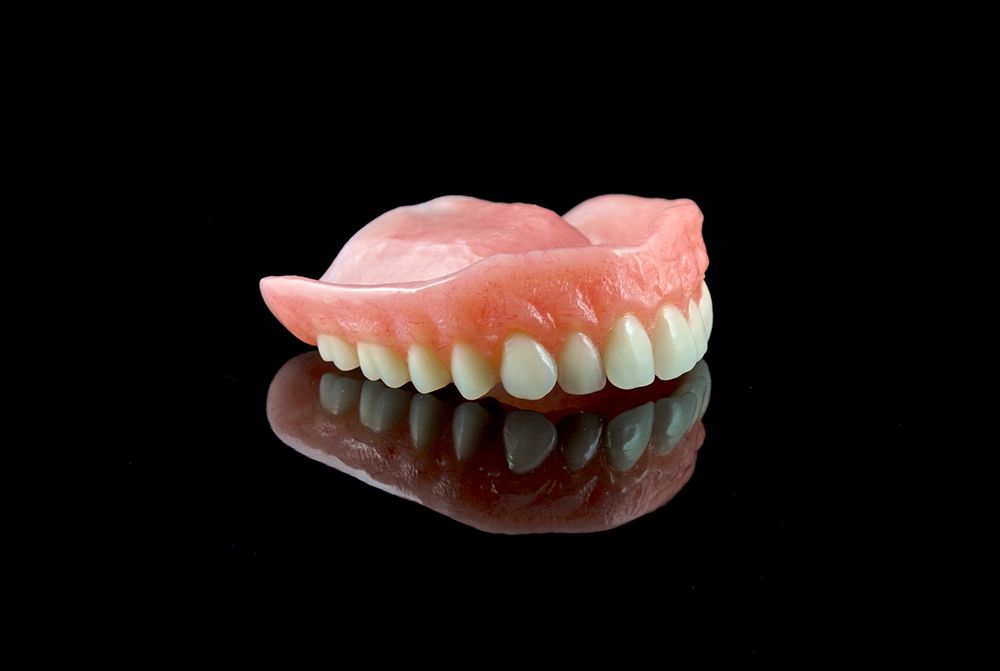
Challenges Lead to Creativity
David Turpin, owner of Spartan Dental Lab
Overall, 2021 was a great year. It’s tough to look back and focus on just 1 thing. However, 2021 inspired creativity. I’m sure everyone reading this is used to being told the products they need are on back order without any explanation of when it will be back in stock. It was frustrating to have to start searching for and using a new product, or having to wait for the original item to come back in stock days or even weeks later. Then there were all the calls to the doctor, having to tell them we have no idea when they will get the case or try to sell them on a new process.
This was very stressful for many labs, and I’m sure it was very stressful for our vendors who were directly experiencing the supply chain issues. In a way, I think this has inspired all of us to get creative.
For my lab, we have pushed for digital dentures because of the issues we have with getting denture teeth. With this process, we can design and print or mill the denture teeth. This way, we are able to produce products faster while using a more reliable process.
Working closely with a few of the material manufacturers, I know they are thinking outside of the box for many things in 2022. I’m super excited to see how creative the industry gets in 2022 to combat many of the issues we faced in 2021.
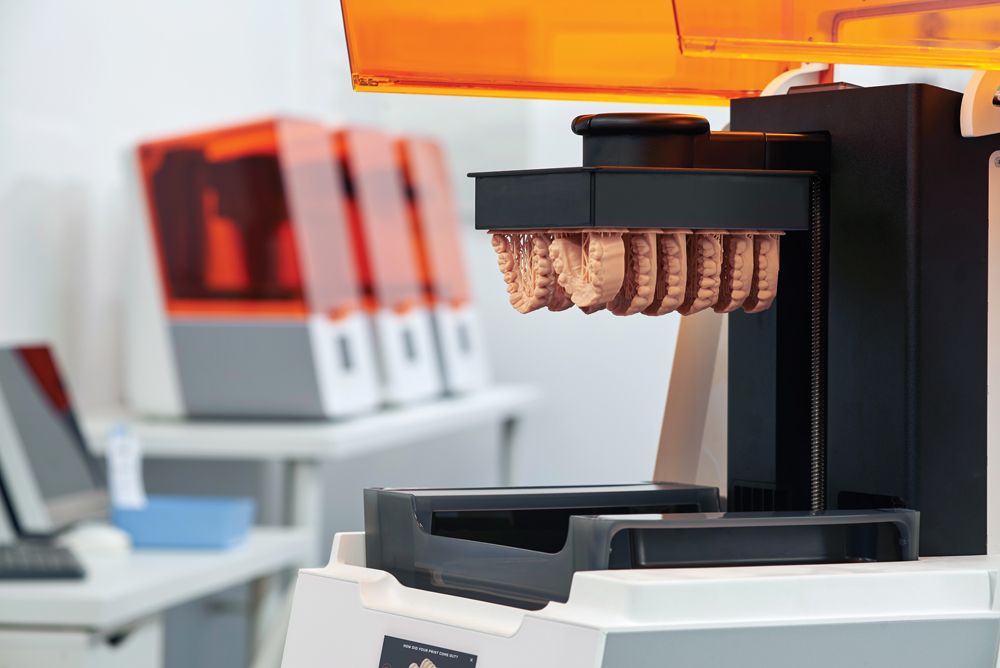.jpg?fit=crop&auto=format)
The Formlabs Form 3B printer is designed to create new workflows and opportunities for dental labs of all sizes.
The Answer To Labor Shortages Is Smarter Technology
Dávid Lakatos, chief product officer at Formlabs
Labor shortages greatly impacted dental labs in 2021 and will continue to have an impact into 2022 as the COVID-19 pandemic and “Great Resignation” compound an already tight labor market. The global dental lab market is expected to grow 5% annually over the next 5 years, and with a stagnant labor pool, labs must find a way to remain competitive while dealing with a shortage of workers. Looking to the New Year and beyond, dental labs must pay attention to the technology and tools that will speed up workflows and ease the burden on smaller teams.
Digital dental workflows are one such technology that can transform labs. Technicians that digitally design and fabricate models, prosthetics, and appliances from a digital impression can create dental products at a fraction of the cost and time, resulting in a more efficient staff—even at reduced numbers. Labs that have not already embraced digital dentistry workflows will be left behind and outpaced by those that do. With technology improving and costs dropping, there has never been a better time for lab technicians to make the switch to digital workflows.
The adoption of digital workflows and technologies, such as 3D printers, also enables smaller labs to take on the goliaths of the industry. Until relatively recently, only large-scale dental labs had access to 3D printing technology. Now 3D printers are becoming more affordable and accessible thanks to on-demand training, easy-to-use software and hardware, and a vast library of resins for different applications. The increased accessibility and affordability of CAD/CAM technology will grant smaller labs the opportunity to take on more work, turn out better products, and grow their business in 2022 and beyond.
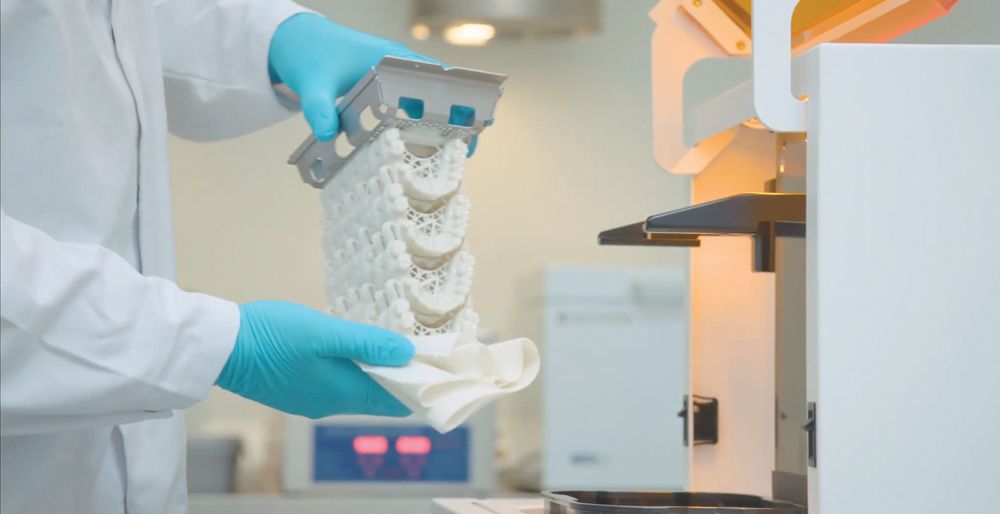
Larger build volumes are leading to more production from 3D printers, such as the NextDent 5100 from 3D Systems.
3D Printing to Continue Growing
Stef Vanneste, vice president and general manager of dental at 3D Systems
In 2021, dentistry has gone—and is still going—through fundamental changes moving toward digital workflows. Traditional lines became less apparent, whereas 3D printing has become more and more embedded within essential parts of providing oral health care. I believe this will create great opportunities for us to show the many advantages of 3D printing, the foremost of which is enabling better patient outcomes.
In 2022, the transformation toward 3D printing will continue to progress rapidly. When it comes to technology, I foresee a further shift to bigger build volumes for digital light projector printers. However, the biggest innovations I see are regarding 3D printing materials, as they will become more advanced, and the number of applications will grow. With this trend, we will also see a greater need for education and training.
Related Content:

 Download Issue: Dental Lab Products December 2021
Download Issue: Dental Lab Products December 2021

